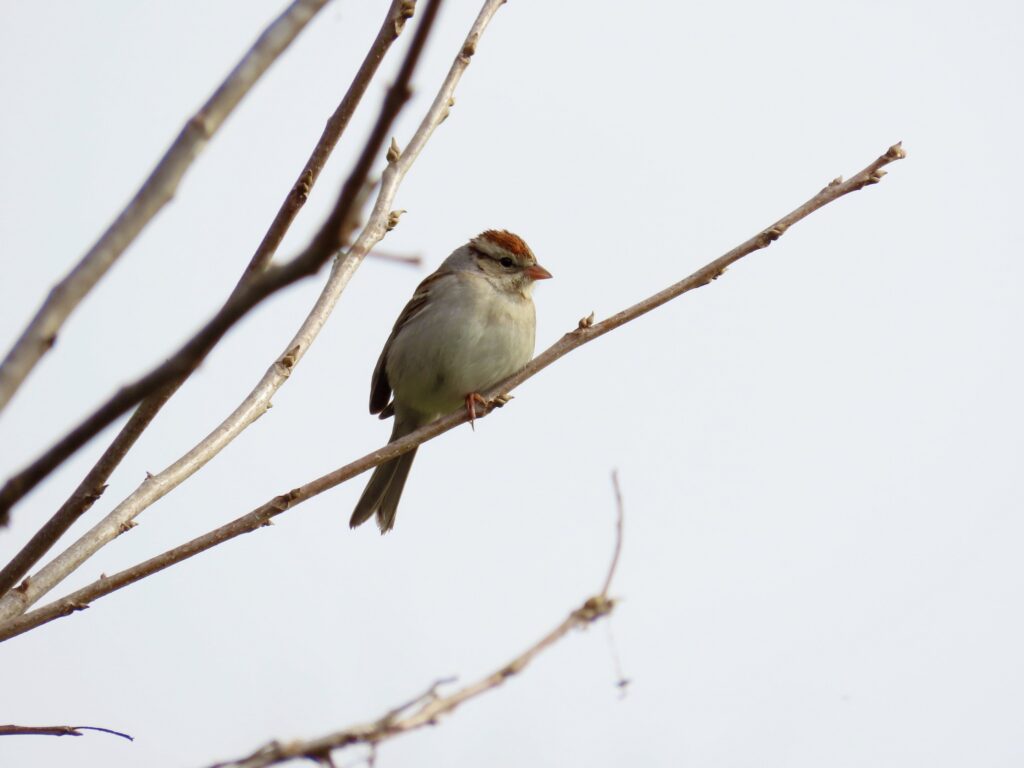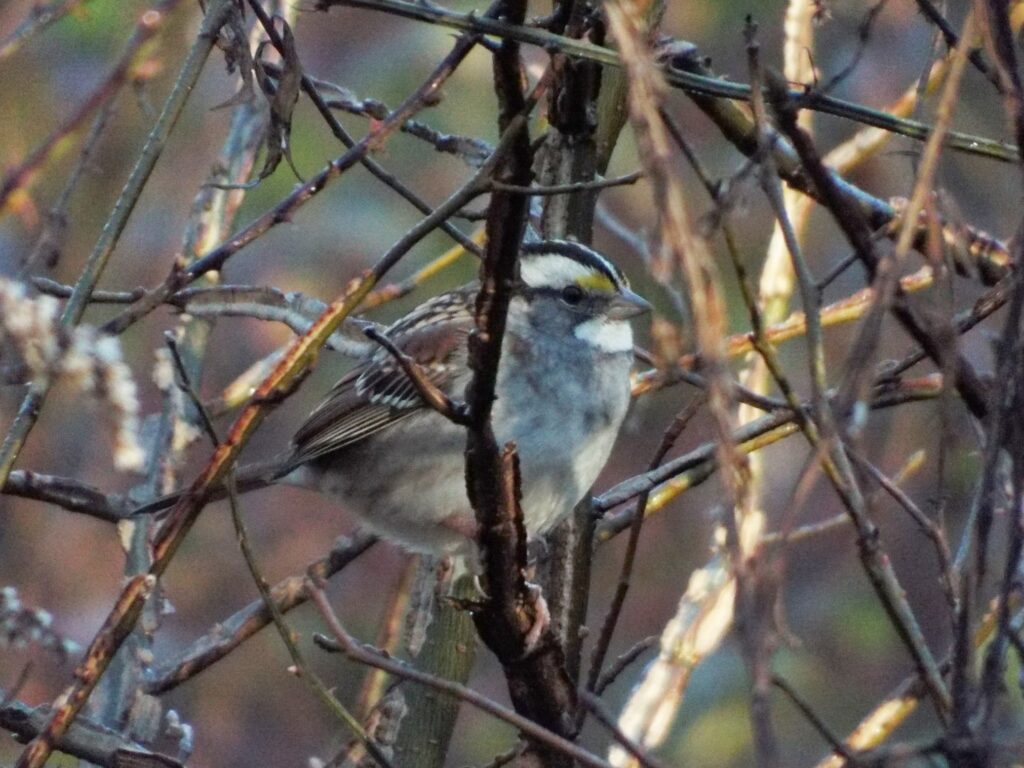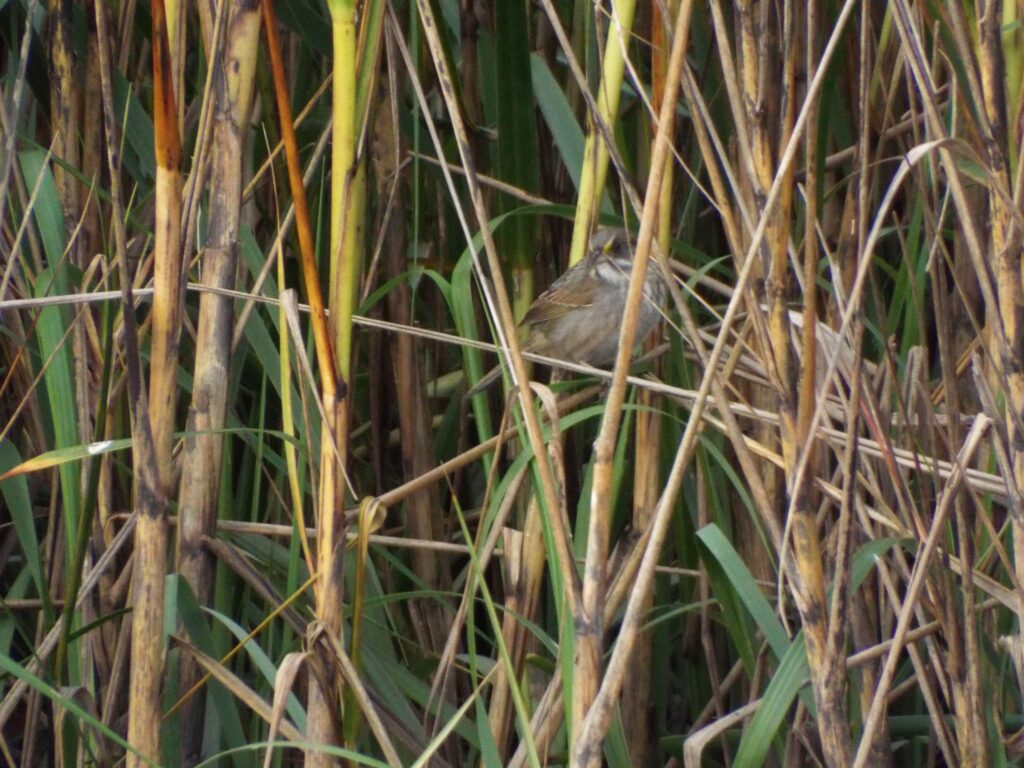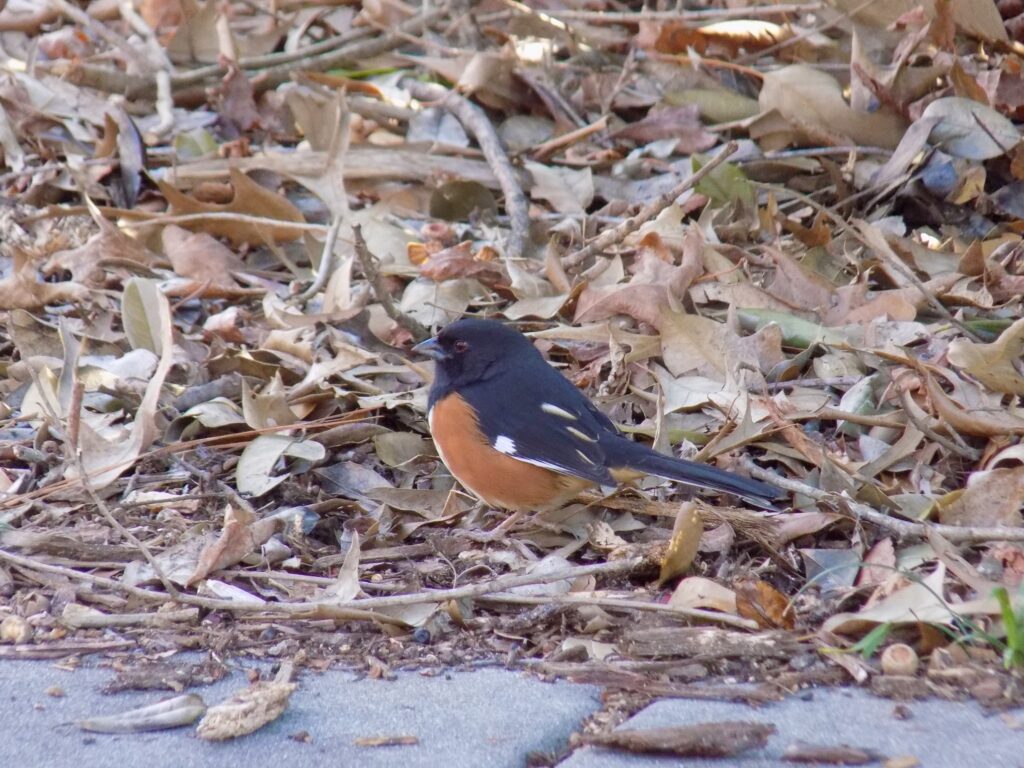
This week for Flora and Fauna Friday we have our most diverse family of winter songbirds, the New World Sparrows of family Passerellidae.
Here in South Carolina there are about twenty-two species of New World Sparrows that one could reasonably expect to find somewhere in the state in a given year. However, we can whittle that down to about eleven species which one can readily find on Edisto Island. Sparrows as a whole are medium to small-sized songbirds with rather heavy triangular bills who feed primarily on seeds. They most often have cryptic, streaky plumages of browns, tans, grays, blacks, and whites. Their calls are generally short, sharp, and harsh and their songs high-pitched and clear. Most of our Sparrows our skittish and spend their lives in deep, brushy cover and thus are usually difficult to see. They are most plentiful and diverse in the winter months and there are almost always several individuals in any good habitat. I won’t go into all eleven common Lowcountry species today, which is a shame because there are a lot of interesting and rare sparrows one might run into out here with rather esoteric and nuanced field marks. (These confusing sparrow species are affectionately referred to as “LBJs”, little brown jobs, in the birding world.) Despite my desire for a skosh of brevity on this post, I will at least briefly cover our five most common and unique species of New World sparrow: Song Sparrow (Melospiza melodia), Chipping Sparrow (Spizella passerina), White-throated Sparrow (Zonotrichia albicollis), Seaside Sparrow (Ammodramus maritimus), and Eastern Towhee (Pipilo erythrophthalmus).
The Song Sparrow is what I would call our standard Sparrow. It’s about dead-center in the size range with fairly typical calls, songs, and habits. Its appearance is non-descript, highly varied, and well camouflaged but with discernable field marks. It’s also a generalist and very common, so it can be found in a wide range of habitats intermixed with other sparrow species. Thus, it’s a good standard by which to compare all our other sparrow species. Song Sparrows can be found in almost any grassy or brushy habitat and have a preference for ditches, wetland margins, and other edge habitats. Their plumage is primarily comprised of warm brown streaks on a gray back and white breast. It has a pale eyebrow, heavy flank streaks, and a prominent blob of brown smack in the center of its chest. The Song Sparrow’s most common call is short, loud, and a bit hoarse. It’s described less as a typical sparrow “chip” and more of a “chimp”. If you have a good ear, this call is more than enough to identify a Song Sparrow.

The Chipping Sparrow is our most numerous sparrow in suburban habitats and is also quite common in open pine savannas. They prefer sparse grassy areas and bare ground. They usually move in flocks of a dozen or more birds. They are one of our smallest sparrows and their plumage stands out for its simplicity. On top they have a rusty cap, prominent pale eyebrow, a dark eye-stripe, and a brindled back of black and warm-brown. Below, they are a uniform aluminum-gray. Chipping Sparrows are regular feeder birds and often saturate yard feeders all winter. Their call is a quiet and very high-pitched “chip” and their song a rapid-fire trill of high-pitched monotone notes.

The White-throated Sparrow is by far our most common woodland sparrow. They can be found in likely every upland brush pile, thicket, field edge, and clear-cut on the Island. They prefer to stay in deep cover whenever possible and can be difficult to get a good look at, but you can easily hear them chipping and scratching leaves from beneath. When you do lay eyes on one, they’re quite easy to identify. White-throated Sparrows are on the large side for a sparrow and sport some distinct facial markings: a snow-white throat, bright-white eyebrows, a dark cap with a pale line through it, and yolk-yellow patches just in front of the eyes. They also have an unmarked, pale-gray underside and a warm-brown back. Their song is flute-like and distinct and their calls high-pitched, often with an anxious or frantic intonation.

The Seaside Sparrow is notable for a few reasons. One, it’s one of our few resident species of sparrow that can be found here year-round and, two, it’s specially adapted for life in the salt marsh. The Seaside Sparrow can be found all throughout the salt marshes of Edisto Island and the Lowcountry, most often surrounding hammock islands, causeways, and upland margins. It feeds beneath the marsh grass and retreats to the high marsh on high tides or to hammock islands and marsh fringes during king-tides and storm surges. These birds are common but very skittish and difficult to see unless flushed at a high tide. In the winter their numbers are bolstered by migratory subspecies who come to snowbird alongside our resident Macgillivray’s subspecies. The Macgillivray’s Seaside Sparrow is a large sparrow with a notably short, ragged tail. Their plumage is distinctly a muddy dark gray with faint accents of neutral-browns and blacks. This is contrasted with a white throat and lemon-yellow patches in the eyebrows. Their songs and calls are somewhat non-descript and often difficult to hear in the field over the roar of the sea breeze, the rumble of boat motors, and the caterwauling of blackbirds and grackles.

The Eastern Towhee is our most standout sparrow in many regards. It’s our largest sparrow with a striking appearance, distinct calls and songs, and it’s a year-round resident of South Carolina. The Eastern Towhee can be found in a wide range of brushy habitats but has a preference for tall thickets and bushes that create a canopy of cover. They’re scratch feeders who root around for food beneath the leaf litter. Their appearance is unmistakable. Males sport an ink-black back, head, and breast and females the same but a mocha-brown. Their flanks are a solid rust-red and their belly a pure-white. White accents can also be spotted at the wrist of the wing and on the outside tail feathers. Most have a deep, blood-red eye but some coastal populations belong to a subspecies with a sharp, yellow eye. The song of the Eastern Towhee is an easily recognized “Drink-your-Tea” with the “tea” rolling into a trill. Their most common call is a namesake slurred “tow-hee”.